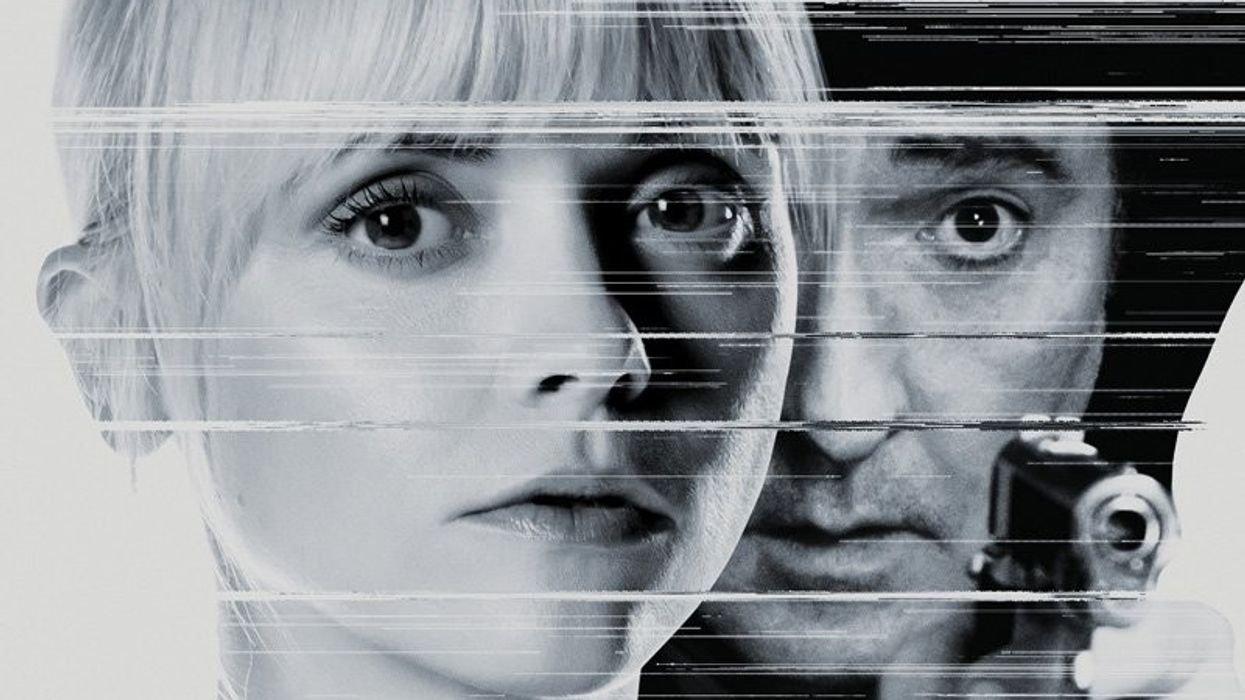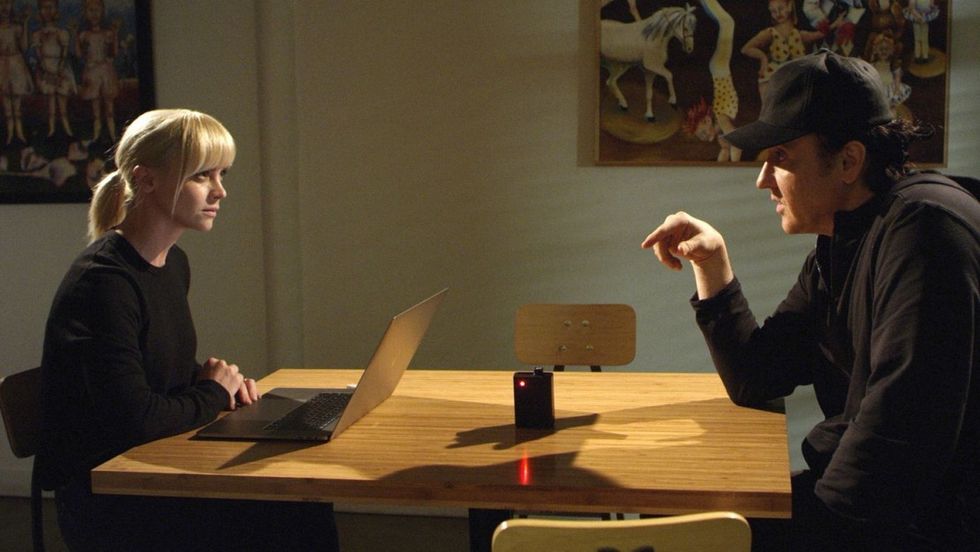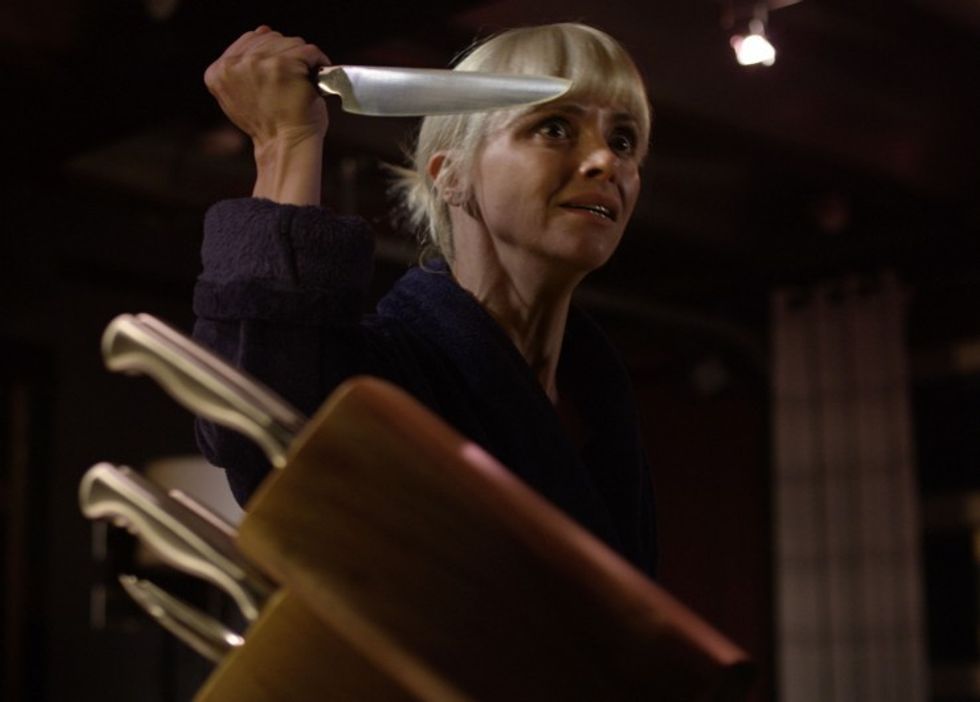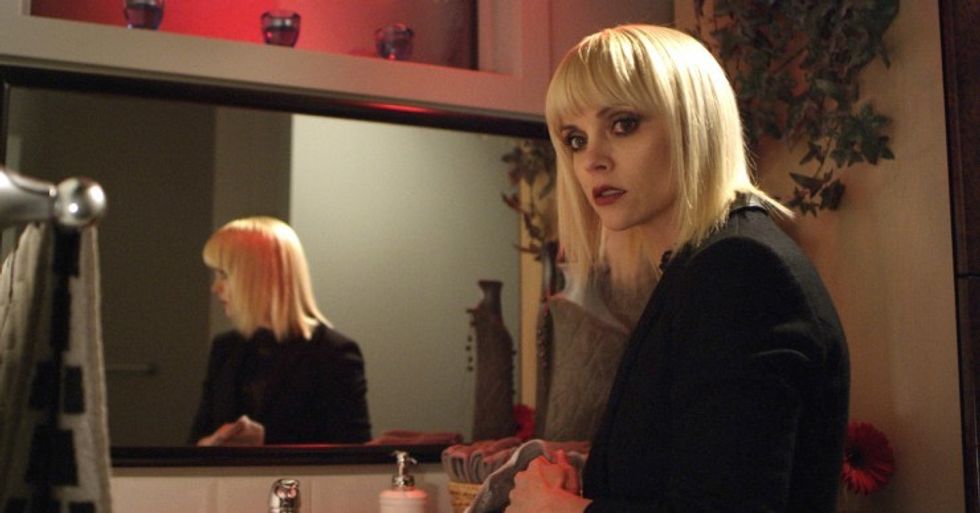'Distorted' DP Mark Dobrescu on How Lighting and Locations Helped Visualize Paranoia
For DP Mark Dobrescu, strong cinematography often depends on compromise.

Director Rob King's new film, Distorted, is a classic example of a film that takes a basic idea and pushes it forward, almost to the breaking point. When young couple Lauren and Russell move into a seemingly dreamy new home, it appears that something small is amiss. That small something grows into something large as they learn that they're being spied on by a large, malevolent corporation.
Lauren, the film's protagonist, has been diagnosed with bipolar disorder, and the film goes to considerable lengths to take viewers inside her head both dramatically and visually. So invested in the story were the film's director and producers that they created a 360-degree trailer and virtual-reality featurette (also called an "experience") for the film, available to stream now on most major VR platforms.
DP Mark Dobrescu was obviously a very important part of the film's delivery, given that this a story told as much through visuals as through dialogue. Dobrescu's other film credits include The Humanity Bureau, The Recall, and Stranded; No Film School sat down with Dobrescu recently to talk about how the movie came together. Distorted is in theaters now.
No Film School: The central interior of the film has a palpably cold quality to it. How did you achieve that effect?
Mark Dobrescu: I really try to let the location become my flag. In other words, I’ll get 90% of the light from the windows and let the natural elements become my cutters or my flags. You have to augment a little on the inside, of course. To achieve the cold look, I would literally have the light coming in, and I would usually have a combination of a 1/4 blue and 1/8 green on my gels just to cool the ambient down, and then in the final color timing, you would see exactly the level that we’re shooting at, and I would just augment a little bit that way, really also keeping as little fill light as possible. When the lights were coming in and they were bouncing off of the walls, I would put up a white board that would be very lightly painted (a light blue) so that the bounced light comes into the cool effect.
NFS: How did you achieve that same quality in the night scenes?
Dobrescu: The night scenes are much easier, because if we’re actually shooting at night, there’s no light coming in from outside, so just by the color temperature, the lights and the gels, was I able to get the tone I wanted. I can’t remember the exact gel number we used for the night light coming in. It was a little bit strong, and so I cut it back ever so slightly to reduce the chrome in the final timing.
"I really try to let the location become my flag."
NFS: The whole film gives off a sense of paranoia. How did that affect the way the film was shot?
Dobrescu: That had a big impact on how we shot it. When I was first discussing it with the director, it wasn’t really a fast-moving picture with lots of action. We wanted to accent what was going on inside Lauren’s head and how we would pull this emotion out. We went with the short-sighted framing and different kinds of angles with lots of headroom so that we could portray the emptiness weighing on this woman, so that every time she’s in the frame, it’s just not right. Hopefully, it’s not heavy-handed. Hopefully, it conveys a feeling you might get. As the film progresses and we establish that film language, I feel it worked really well.

NFS: The 360-degree trailer and VR feature made in connection with the film received a lot of attention. How did the presence of those elements in the whole "package" of the movie affect the way you thought about the cinematography?
Dobrescu: Shooting in the 360 degree VR format is a completely different beast. First of all, you have to place the camera in such a way as to give the scene a certain viewer's perspective. Is the viewer an object on a table, a fly on the wall, or the TV in a corner of the room? This occurs because the viewer becomes immersed within the picture itself and isn't just a passive viewer.
On the technical side of the cinematography, it is quite different. Once you decide how you want to shoot it,perspective-wise, you then have to figure out how you are going to light and block the scene. Since you see 360-degrees, lights must be hidden very cleverly, as nothing is off camera. I used quite a few battery-operated LEDs for certain scenes and then natural light for others.
NFS: The film mixes regular footage with the surveillance-style footage. Could you say a little bit about how you conceived of the surveillance footage? Any special considerations made for it?
Dobrescu: There is a type of natural style to surveillance footage. They are usually high angles with extreme wide lenses and with poor resolution. We decided to emulate this style but wanted a higher resolution image; this would allow us to manipulate it in post-production. We decided to shoot this footage to help accentuate the paranoia that Christina's character was feeling, the ever-present eye in the sky, constantly watching.
"We decided to shoot this footage to help accentuate the paranoia that Christina's character was feeling, the ever-present eye in the sky, constantly watching."
NFS: Some portions of the film take place inside Lauren's head. How aware was Christina Ricci of the way you were filming those scenes?
Dobrescu: Christina was not really involved with the exact way we were shooting, as she was really locked in on her performance. She’s done so many films that she can just kind of tell the way things are happening and how you’re handling the scene. It becomes a shorthand language between you both. She can tell if you’re doing the crazy handheld shot, for example, and she’ll say that doesn’t go with the feeling of the movie. It’s quite evident, when you’re moving on slow dollies and the framing is off. She would look at the odd shot, but she was more concerned with her role. It was a nice collaboration with her.
NFS: Was that true of all the actors? To what extent did you work out the visual aspect with them?
Dobrescu: Every actor is different. I would say John Cusack wasn’t too worried about that. We had explained a few things, that this was a style we were shooting in. I try not to be so locked in on this is the shot we want, this is how we’re doing it—when the actors come on set, they have their own ideas. Even if you had figured out how you wanted to block it with the director, that may be completely out the window.
As long as you keep your same style and look, it’s almost like music. Once you have your songs set and start jamming, you have to be able to go off in a different direction, and that’s how we treated this, "this is how we want it to go, but if they start playing, we can adjust it quite quickly."

Dobrescu: I knew a couple of months before we started shooting that I was going to do the project. I had the script, and Rob King is in a different city, and so that’s when we had initial phone discussions about the general feel we wanted to put across, and then we started researching, not so much looks but Hieronymous Bosch paintings, and how they conveyed an emotion. You’d look at them and go, “Holy…” And what are you feeling when you see that? We tried to take that element as a way to create an uneasy feeling.
But then, as much as you think, "This is how we want it to go," then the location is found, and the deal is then, "Okay, this is not what I had in my head at all." You start manipulating your idea, i.e."Okay, we can’t do this, you want her in a very tight confined space here? Well, this house has a lot of windows and is open, so let’s play the openness more, let’s make the shots looser and the framing a little bit different, make the emptiness play a more dominant role within the visuals."
That kind of grew as we found our locations, and then we started going, "You know what, this location is a little too claustrophobic at this point in the script. We’ve got to have a little more openness" and then you just start finding locations dependent on the style you want (and also on their availability). You can find a great location, and say, "Oh, this is perfect, but due to budget, time, or whatever, we can’t shoot there." And then off we go to somewhere else.
"In pictures that don’t have a huge budget or a huge shooting schedule, you really have to be flexible."
NFS: Tell me about finding the location.
Dobrescu: Oh, that’s always a process. We would tell the scout, "We need a fairly big condominium complex or high rise." The scout couldn’t find the place that really had the great look, and so we found a beautiful home, we’re going to add a few floors to it, but then that doesn’t work for part of the film. So then you start piece-mealing what you have to do. Our location manager will bring options, you look at some photos, and you go, "Yeah, let’s look at this one, this one doesn’t work."
You try and cut back on your workload so you’re not going to 40 different places. You whittle it down that way, and then you get into a place and you say, this will work. In pictures that don’t have a huge budget or a huge shooting schedule, you really have to be flexible. It’s like, "This is the better location, but we have to do a unit move on this day to shoot there. Is it worth it for that?" And then you’ll realize that it's not. It’s always a compromise.

Dobrescu: It went pretty well, because a lot of it is in that one location. There was no big hallway, so Cathy McComb, our production designer, designed it. We were shooting in somebody’s house. It’s not a hotel or anything, so you have to make these other elements work. Once we had the pinnacle set and the house figured out, the rest fell into place quite quickly.
At the original script level, the end of the film was at a different place. We found this old abandoned hotel winery on a hill, a great location. Rob King then rewrote the ending—not the dialogue, but the visual element of it—to make it work in that setting. So that was the way the location dictated what we were going to do more than the script did.
NFS: How did thematic frustration and alienation in the story affect the way you shot the movie?
Dobrescu: That was a real theme in the movie and always something we tried to put across. Whether in the camera movement or Christina’s performance, there was always a conscious effort to make the viewer feel like there’s a Big Brother watching, something else going on. It’s very easy to do, but we wanted it to be as subtle as possible. The subtleness of it made it almost seem more heavy-handed, like there was something really evil and sinister there.
When we were first discussing it, we were thinking we could leave a red herring, i.e. is it a haunted house? We were trying to make it so the audience wouldn’t lock in on what was going on right away, and then once you find out it’s a corporation, then almost everybody can understand it, because there’s almost always a section of the population that doesn’t like cameras everywhere and thinks the government is too big. It falls into a lot of people’s primal fear and paranoia, and that’s apparent in society itself.
For more information on 'Distorted,' click here.











